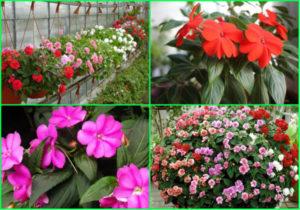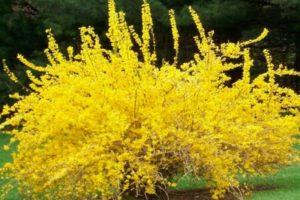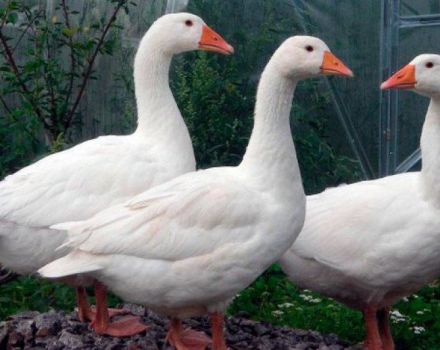Planting and caring for lilies of the valley in the open field, types and varieties
A spring flower, presented as a gift by nature itself, is able to awaken tender sincere feelings and give a light mood, and an exquisite aroma bring notes of spring to life. Therefore, most gardeners choose lilies of the valley, planting and caring for which in the open field is not difficult even for a novice florist.
Than especially the plant
As the spring sun warms up, snow-white lilies of the valley flowers appear on the first thawed patches. Their unique scent cannot be confused with any other plant.
Botanical description
Lily of the valley is considered a herbaceous perennial plant of the Asparagus family, whose height is 30 cm. The creeping roots are located horizontally. Pale lower small leaves extend from the tops of the rhizome. Behind them there are 2-3 large solid basal leaves, which have an oblong elliptical shape, pointed at the end, and a bright green color. Lily of the valley is decorated with snow-white, light pink bells that exude a pleasant aroma.
The flowering period of lily of the valley lasts 20-25 days, at the end of which fruits are formed on the stem, which are red spherical berries with a diameter of 8 mm.
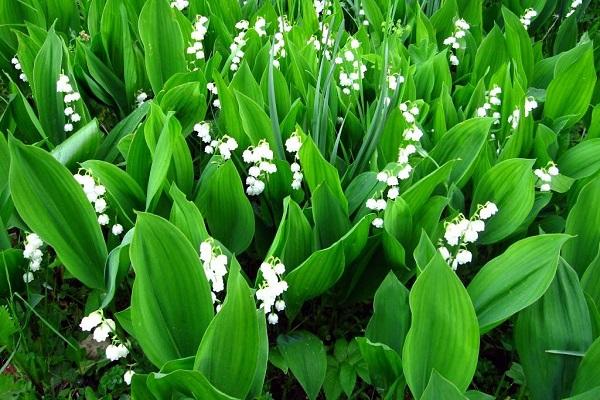
Habitat
The flower grows in shady coniferous, deciduous, mixed forests, between shrubs on moderately moist soils. Occurs on forest edges and open glades. Lily of the valley is widespread in North America, Eastern Europe, the Caucasus, Transcaucasia, Eastern Siberia, and the Far East.
Application
Lily of the valley is used not only in the creation of landscape design, but also in medicine, since the flower has healing power. Also used in the perfumery industry. The smell of a flower emphasizes the individuality of a person, gives him confidence, clarity of thinking.
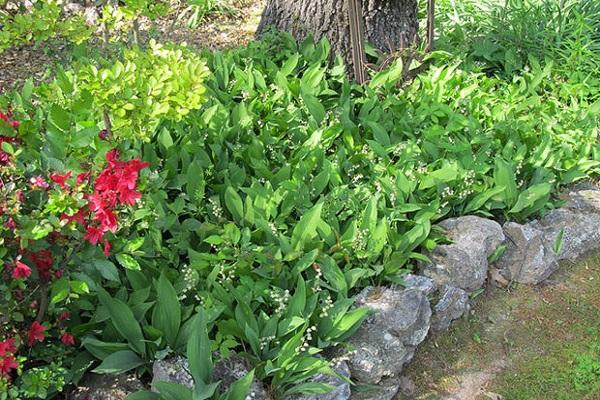
In landscape design
Unpretentiousness and preference for wet soils makes lilies of the valley indispensable in the creation of landscape design. It can be planted in near-trunk circles of trees, you can arrange paths near the house in the country.
The spring flower looks spectacular with hosts, periwinkles, heucheras, astilbe. Perfectly fills the space between other garden perennials, thereby eliminating the need for unnecessary weeding.
In folk medicine
Lily of the valley is a medicinal plant, therefore it is popular with traditional healers, since the flower is capable of:
- relieve headaches and migraines;
- reduce blood pressure indicators;
- help with heart failure;
- alleviate the condition of patients with gastrointestinal diseases;
- calm nervousness, drive away insomnia.
The entire aerial part is used as a medicinal raw material: the stem, foliage, flowers, from which infusions, decoctions, alcoholic tinctures are prepared, and also teas are brewed.

Popular varieties of lilies of the valley
The culture has many decorative garden forms. They are notable for beautiful satin foliage with longitudinal stripes of various shades, large double inflorescences of original flowers.
May
The most famous and popular type of lily of the valley, 30 cm high. The inflorescence has 20 small flowers in the form of spherical bells with 6 small teeth at the edges of the petals. They are colored white and pink.
Keiske
Perennial lily of the valley with a low stem up to 18 cm and a highly branched rhizome. The lower leaves are brown and purple, 3-6 on each bush and 3 long-petiolate, erect leaves, painted in green. The inflorescence is racemose, consists of 10 flowers.
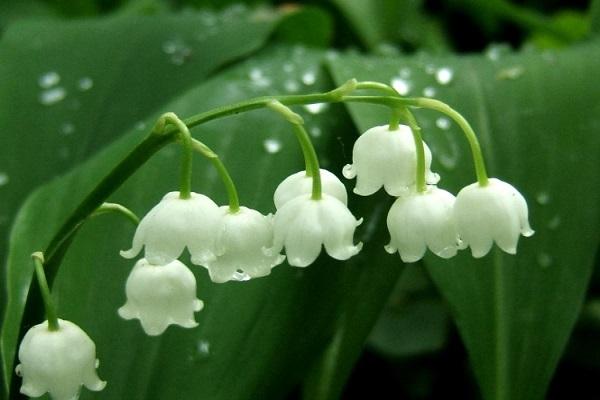
Transcaucasian
A beautifully flowering lily of the valley 30 cm high with oblong, long-petiolate leaves of an elliptical shape and bright green color. White drooping flowers in an amount of up to 20 are combined in bunches, growing from the rosettes of the upper foliage.
Mountain
Mountain lily of the valley up to 35 cm high with 2-3 leaves with a pointed tip. The inflorescence contains 5-15 fragrant flowers, turned downwards, painted white in the form of bells.
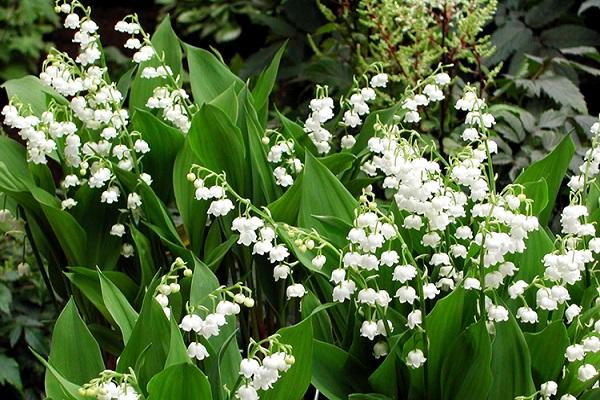
Lily of the valley planting technology
To get abundant flowering, it is important to choose the right place for planting lilies of the valley, prepare the soil, know the timing and technology of planting, and create conditions as close as possible to the natural habitat of the culture.
Choosing a landing site
Lilies of the valley are inhabitants of shady, cool forests, so it is better to plant them under shrubs and trees, since they feel comfortable in shaded areas where moisture from the soil does not quickly evaporate. When choosing a location, it should be borne in mind that the plant needs sunlight, since without it flowering will not occur. Also, lily of the valley bushes should be protected from strong gusts of wind.
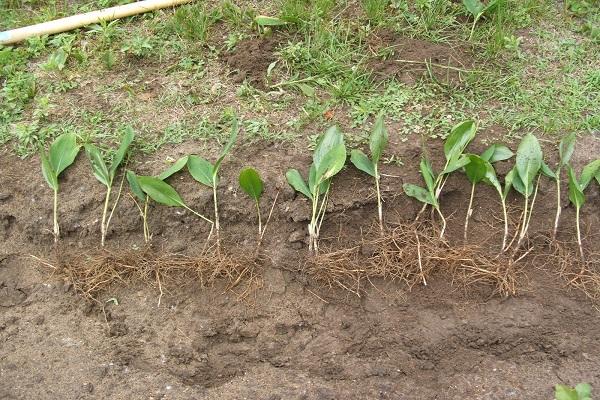
Soil preparation
The site for planting lilies of the valley should have a neutral, loose, sandy loam or soft loamy soil, moderately fertilized with humus. Pink-flowering varieties prefer slightly acidic soil with a pH of 4.8–5, for this you need to enrich the soil with peat.
Terms of planting works
A favorable time for planting lilies of the valley is autumn, from the first days of September to early November. Although many gardeners practice planting plants in spring, in mid-April. But it is better to prepare a site for spring planting in the autumn, and only dig it up in April. This will contribute to the good survival of young shoots.
Planting a plant
It is necessary to plant lilies of the valley in rows, making grooves, observing the distance between planting units of 10 cm, and between rows - 20-25 cm. The depth of the hole should correspond to the size of the roots. It is necessary that the root system is located vertically, in full length, and the sprouts are buried in the ground by 1-2 cm. If there is dry soil, the seedlings should be watered after planting. For the winter period, cover young plants with mulch, this will protect them from freezing, especially in a snowless winter.
In one place, a spring flower can grow without transplanting for 5 years.
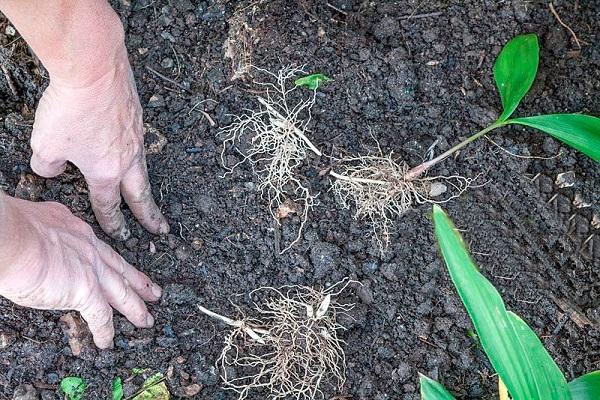
Outdoor crop care
Lilies of the valley can take care of themselves, they are able to displace other garden plants from the garden. But an experienced gardener sets himself the goal of achieving the highest decorativeness of flowers, therefore, he takes proper care of the crop, which includes watering, loosening the soil, applying fertilizers, removing weeds, as well as combating diseases and pests, since no plant is insured against their appearance. including lily of the valley.
Watering and fertilizing
Lilies of the valley are very fond of moisture. Regular high-quality watering is a guarantee of abundant flowering and the development of lush, succulent foliage in dry spring. After moistening, gently loosen the soil in order to destroy the crust and increase the flow of oxygen to the root system.
To prevent the soil from depleting, in the second year after planting, apply fertilizers, which can be used as humus or compost in the form of mulch. Perform the procedure in mid-spring, adding 70 g of top dressing per 1 m². Another top dressing should be carried out in June, before the beginning of the laying of flower buds.
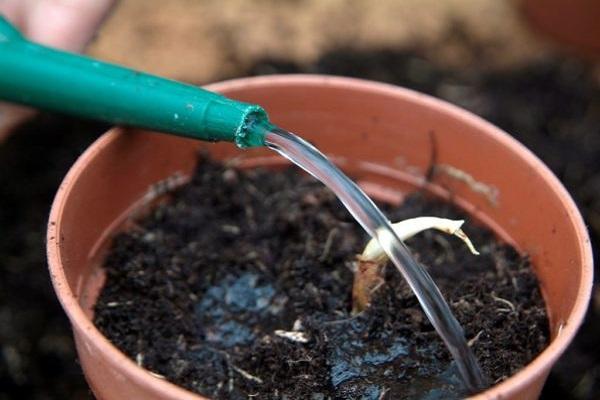
Weed removal
Throughout the season, the beds with lilies of the valley must be kept clean of weeds, which must be removed with extreme care, trying not to damage the roots of perennials, since they are thin and fragile.
Diseases and pests
Due to the poisonous properties of lilies of the valley, pests bypass it, and are also rarely affected by diseases. But there are still insects and fungal infections that can harm spring flowers:
- Nematode. A dangerous pest in the form of a filamentous worm multiplies in moist soil, while shoots and roots are affected. As a result, the plants become weaker, appear depressed, stop growing and do not bloom. On the foliage, spots of a necrotic nature are formed, painted in yellow, brown. Control measures are to dig up the affected bushes and then destroy them.
- Lily cracker. Adults of these insects feed on the green parts of the plant and can cause irreparable damage to flowers. For prevention, you need to monitor the condition of the lilies growing on the flower bed, since these pests lay eggs on their leaves, from which brown larvae develop. And later the adult flying form begins to parasitize on lilies of the valley. If larvae and beetles are found, it is necessary to take prompt action, treat the bushes with pesticides or preparations based on pyrethrum.
- Gray rot. This fungal disease develops in poorly ventilated areas during spring rainy and cold weather. The presence of a dense, dirty-gray plaque signals the appearance of an infection. At the first symptoms of infection, treat the plantings with fungicidal preparations, and dig up and destroy heavily infected specimens.
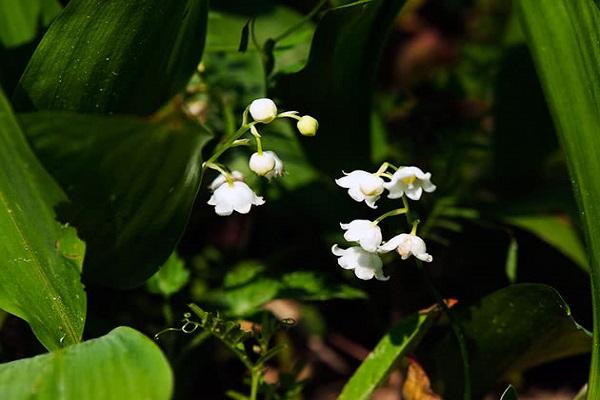
Transfer
Lilies of the valley can be transplanted when fruits in the form of red berries are formed on them. To do this, dig out a 15 x 15 rhizome and plant it in a previously prepared hole, dig in. Then water it so that the soil is saturated with moisture, and then leave it alone until the next watering - the plant needs to settle in a new place.
Reproduction
Lilies of the valley reproduce vegetatively and rarely by seeds, since they have low germination, and the seedlings please with flowering only after 4 years. For vegetative propagation of the culture, division of the rhizome is used. This process must be carried out after the foliage dies off, in the last days of summer - early autumn. To do this, dig up the roots and divide them into sections, which are planted to a depth of 5-10 cm. Next year, the root segments will expel the leaves.

Choosing a vegetative way, you can admire the beauty of flowers as early as the 2nd year after planting.
Forcing lilies of the valley for the New Year and Christmas
Blooming lilies of the valley can be used to decorate any winter holiday. For forcing, it is better to use large-colored forms. Stock up on cuttings in the fall, cutting off the upper part of the rhizome. It is better to choose specimens with a large rounded apical bud. Plant the cuttings in large containers, 10 pieces each, and send them to the greenhouse, burying them in the sand and covering them with moss. Create a temperature for them within 30-35 degrees. Moss the moss as needed. Flowering will come in 3 weeks.
Lilies of the valley are especially popular all over the world, this delicate flower is everywhere considered a symbol of spring and youth, an excellent way to express love.
A thin palette of shades, graceful shape and simple cultivation made it one of the favorite garden flowers.
